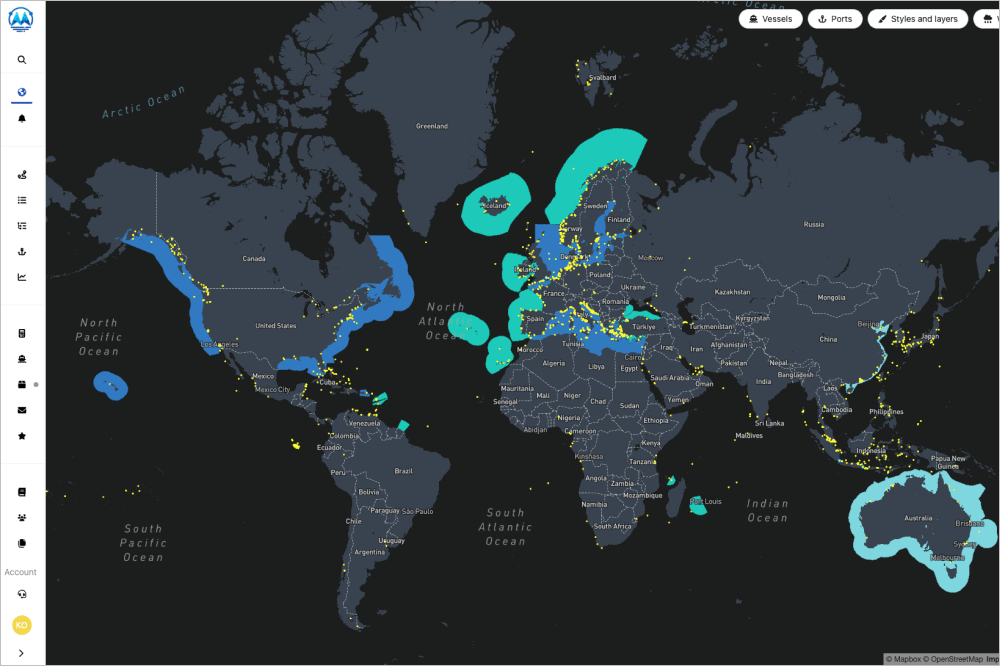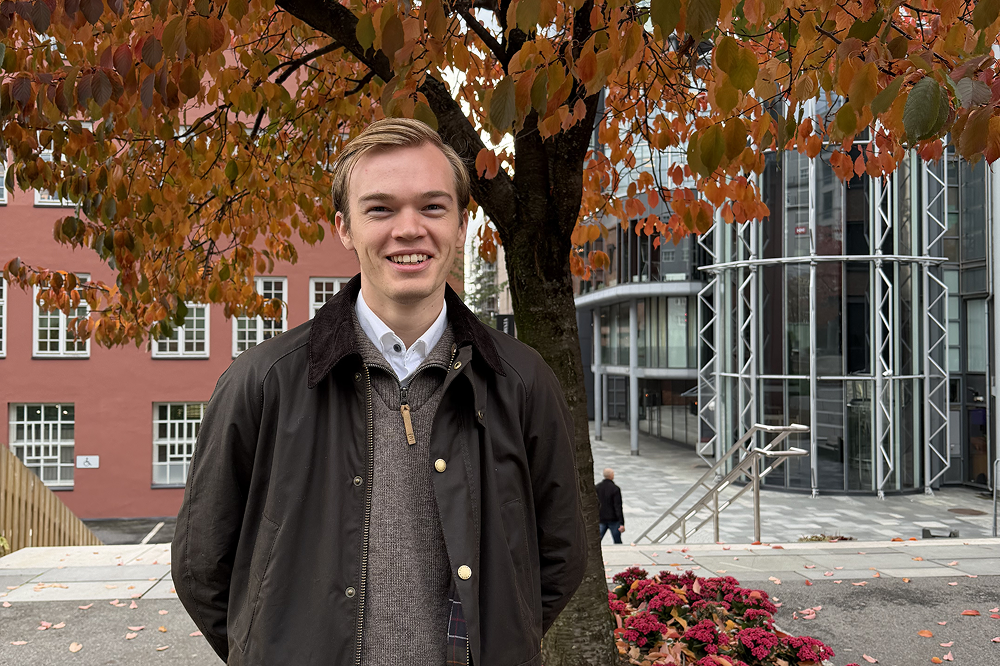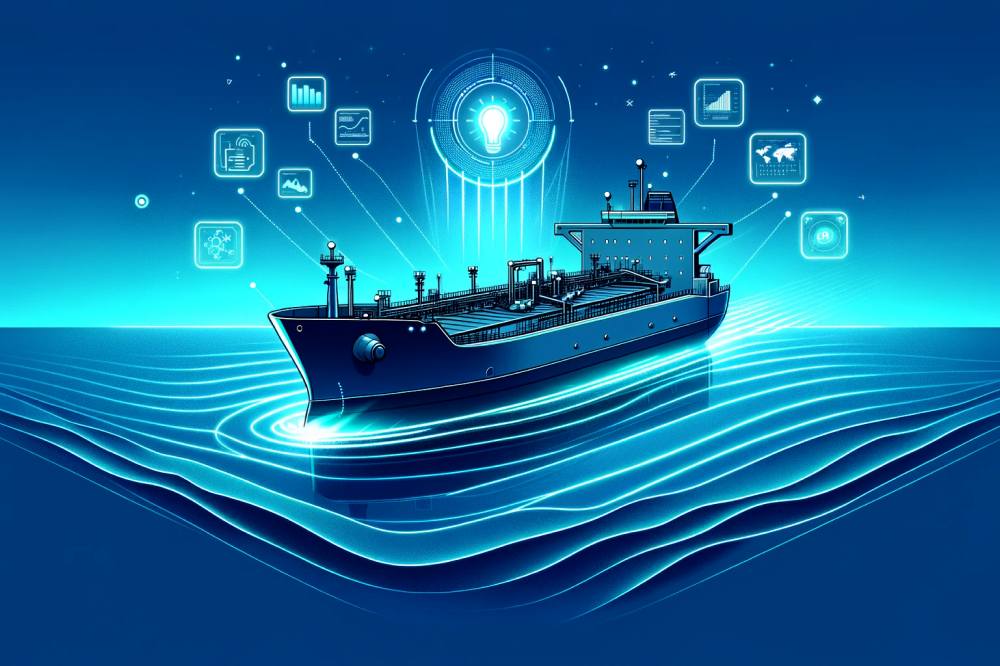
Global Sulphur regulations, ECA and SECA zones
Global Sulphur Regulations
The Emission Control Area (ECA) is sea areas with stricter and mandatory applied rules and regulations to limit and reduce airborne pollution from ships.
The key Emission Control Area (ECA) Requirements are defined in the International Convention for the Prevention of Pollution from Ships (MARPOL) Annex VI regulations on national and global waters.
Sulphur emission control area (SECA):
Ships operating in emission control areas (ECAs) are obliged to use fuel with a sulphur content of 0.10% or even lower.
Nitrogen Oxide (NOx) Limits:
The NOx emission limits are strictly regulated and applied by the IMO on all the new ships especially in ECAs, with applicable IMO's regulations that require advanced engine technologies or exhaust after-treatment systems.
Particulate Matter Reduction:
High particulate matter (PM) emissions are a dangerous factor in increasing the rate of respiratory diseases and environmental pollution, thus, IMO regulatory forces establish the ECAs to get cleaner air and water.
Moreover, this requirement alignment requires using a cleaner fuel and filtration system to reduce emissions rate in a control emission area (CEA).
Operational Compliance:
Vessels or ships in emission control areas (ECAs) must submit fuel changeovers and emission levels, allow inspections by port authorities, and ensure adherence to IMO regulations.
However, non-compliance with Emission Control Area (ECA) regulations could lead to penalties, detentions, or even operational bans.
Scrubber:
Scrubber installation in ships is considered an alternative solution to using fuel with low sulphur content, as scrubbers can remove SOx emissions from exhaust gases.
On the other hand, some emission control regions restrict the use of some types of scrubbers due to water pollution concerns.
As of January 1st 2020, the International Maritime Organization (IMO) enforced the Sulphur Emission Regulations under the MARPOL convention. The Sulphur limit from 2020 requires all ships to reduce their Sulphur emissions from 3,5 % to 0,5 % in all the world's seas.
There are currently five Emission Control Areas (ECAs). These ECAs cover North America, the US Caribbean Sea Areas, the North Sea, the Baltic Sea and the Mediterranean Sea. Ships are required to use fuel with a 0.1% Sulphur content limit while operating in these ECAs. These rules have been applicable since 1st January 2015, and the Mediterranean Sea was included from the 1st of May 2025.
The implementation of the global sulphur limit of 0.50 %, designated under Regulation 14 of MARPOL Annex VI, has not changed the requirements applicable in the five ECAs.
Since Regulation 4 of the Annex VI allows the usage of exhaust gas cleaning systems (EGCS) as an alternative method of compliance with Regulation 14, the 0,10 % Sulphur limit continue to apply.
National and Regional ECA and SECA zone regulations
China

China introduced their own domestic ECA regulations in September 2015 requiring a maximum of 0,50 % SOx limit on fuel.
However, in November 2018 a new coastal ECA was introduced. The 2018 Chinese ECA includes all sea areas and ports within China’s territorial sea including the province of Hainan and two inland ECAs being parts of the Yangtze and the Xi Jiang River. Ships must currently use fuel with a 0.5% sulphur content limit when entering into the Chinese ECA.
Chinese inland ECA regulations requires max 0,10 % Sulphur content. The inland regulations include the navigable waters of the Yangtze River and the main lines (from Shuifu in Yunnan Province to Liuhe Estuary in Jiangsu Province) and the Xijiang River main lines (from Nanning in Guangxi Province to Zhaoqing in Guangdong Province).
The three special Chinese inland ECAs are the Pearl River Delta, the Yangtze River Delta and Bohai Bay. Ships destined for the Yangtze River and the Xi Jiang River must use fuel with a sulphur content not exceeding 0.1%. From 1 January 2022, a sulphur cap of 0.1% also apply to seagoing vessels entering Hainan Waters (straits) within the coastal ECA. Any fuel change-over operation must be completed before the entry into or commenced after exiting from an ECA.
South Korea

From September 1st 2020, all vessels berthing or at anchorage in the Korean ECAs must burn fuel with a maximum sulphur content of 0.10 %. Ships must switch to compliant fuel within 1 hour after anchoring or mooring and continue using it until 1 hour before departing.
The Korean ECAs cover Korea’s five major port areas. These port areas are:
- Incheon, including Kyongin Port
- Pyeongtaek-Dangjin
- Yeosu
- Gwang-yang, including Hadong Port
- Busan; and
- Ulsan
From January 1st 2022, changeover to 0,10 % low sulphur fuel is to be completed at entry into the SECA and use of compliant fuel most continue while the vessel remain inside the SECA.
Alternatively, EGCS compliant with MARPOL requirements can be used providing the reduction in Sox emission is at least as effective as using the 0,10 % fuel.
Read more about Designation of SOX Emission Control Area in the Republic of Korea, in Korean Register’s report.
Arctic Canada
In accordance with MARPOL Annex VI Regulations 13, as amended by IMO Resolution MEPC.392(82), ships operating in Canadian Arctic ECA with a marine diesel engine with power output of more than 130kW are required to be certified to the NOx Technical Code 2008 to meet the NOx Tier III standard for ships entering the zone after 1st of March 2026. The rules are applicable for ships with keels laid or at a similar stage of construction on or after 1 January 2025.
Ships operating entering the ECA zone after 1st of March 2027 will need to have on board sufficient compliant fuel oil (0.10% m/m maximum sulphur content) and bring it into use as required, or have installed and operate an approved alternative compliance mechanism, such as an Exhaust Gas Cleaning System.
Australia

Australian ports and waters are outside of IMO MARPOL Annex VI ECAs. From the 1st of January 2020, the sulphur content of fuel used for propulsion or operation onboard a vessel must not exceed 0,50 %. Local regulation enforce a 0,10 % limit on cruise ships in Sydney harbor capable of accommodating more than 100 passengers.
Regulation 4 also applies, and EGCS can be used as an alternative means of compliance if at least as effective in terms of SOx emissions reduction as the fuel sulphur limit.
Read the full guidance for Australia's Emissions Regulations here.
European Union (EU)

EU’s Sulphur Directive says all ships berthing inside an EU port have to use marine fuels with a sulphur content not exceeding 0,10 %. If they arrive at a berth with fuel oil onboard with a higher sulphur content the vessel needs to start a fuel changeover operation as soon as possible after arrival at a berth and as late as possible before departure.
The sulphur limit does not apply if:
- Ships are due to be at berth for less than two hours, according to published timetables; or
- Ships switch off all engines and use shore-side electricity while at berth in ports.
There are 27 EU members. The member states are highlighted in the photo below.

Iceland

From the 1st of January 2020, the sulphur content was reduced to 0,10 % in Icelandic territorial waters – along with fjords and bays . Vessels will be banned from using heavy fuel within Icelandic territorial waters unless employing authorised methods to reduce sulphur dioxide emissions.
Norway

Norway follows the EU Sulphur Directive, which requires ships at berth in Norwegian ports to use marine fuels with a sulphur content not exceeding 0.10%.
From the 1st of March 2019, the Norwegian World Heritage Fjord areas, in Western Norway were included in the ECA 0,10 % sulphur limit. The World Heritage Fjords included are:
- The Nærøyfjord
- The Aurlandsfjord
- The Geirangerfjord
- The Sunnylvsfjord, and
- The Tafjord
Norway has specific rules for two areas designated as World Heritage Fjords where additional controls apply: Ships must use either:
- fuel with a sulphur content not exceeding 0 10 % by weight; or
- an approved closed loop exhaust gas cleaning system; or
- an approved hybrid exhaust gas cleaning system in closed loop mode.
From the 1st of January 2020 Norway adopts to the EU’s Sulphur Directive (0,10 % Sulphur content). All ships berthing inside a Norwegian port must use marine fuels with a sulphur content not exceeding 0,10%.
The Norwegian environmental instruction also states that as a minimum the vessels need to document they comply with operational and technical measures for reducing particle matter emissions and visible smoke, and speed as a measure for reducing emissions and discharges.
The Norwegian Sea will become a NOx Technical Code 2008 to meet the NOx Tier III standard from 1 March 2026 for ships with a building contract placed on or after 1 March 2026.
The Norwegian Sea will become a Sulphur Emission Control Area (ECA) from 1 March 2027. From this date, ships operating within the Norwegian Sea ECA will be prohibited from using fuel oils with a sulphur content exceeding 0.10% unless an approved equivalent arrangement, such as an Exhaust Gas Cleaning System (EGCS), is used.
Ireland (Irish Sea)

January 1st, 2020, the limit was reduced to 0,50%. According to the EU Sulphur Directive from the 1st of January 2020 the Irish Sea was included in the EU Directive and applies a maximum of 0.10% sulphur fuel is to be used in Irish port.
As of now, there is no specific ECA designation for Irish waters that would enforce the 0.10% sulphur limit for ships merely sailing throughIrish waters are not in a Emission Control Area defined by MARPOL Annex VI Regulation 14.
Turkey

Turkey has its own Sulphur emission regulations, thus aligned with the regulations in EU ports (sulphur content not exceeding 0,10 %) for all ships waiting at anchorage or berthing in Turkish ports or doing offshore operation in Turkish water or ships sailing inland waterways. The regulations do not apply for vessel transits in Bosporus and Dardanelles and the Marmara Sea unless these vessels in transit have anchored in the area for more than 2 hours.
However, notwithstanding this regulation, Members will be aware that the overriding priority is compliance with MARPOL Annex VI which currently requires all vessels sailing within an ECA to use fuel oil containing not more than 1.0% sulphur by mass, regardless of flag. On April 6th 2021, Turkey’s Ministry for Environment and Urbanization General Directorate for Environmental Management issued a notice prohibiting discharges from EGCS meaning it is forbidden to discharge any washing water of scrubber systems into Turkish territorial waters
The notice, available in Turkish and English, can be read in full here.
The Mediterranean Sea

The whole Mediterranean Sea became an Emission Control Area (Med SOx ECA) under MARPOL Annex VI on the 1 May 2025. The sulphur content in fuel oil for ships operating in the area is now limited to 0.1% unless an exhaust gas cleaning system (EGCS) capable of achieving an equivalent SOx emission level is utilized
The Canadian Arctic ECA and the Norwegian Sea ECA
The Canadian Arctic ECA will extend the existing North American ECA to include all of Canada’s Arctic waters.
The Norwegian Sea ECA will extend the existing North Sea ECA, beginning at 62° north and covering the Norwegian Exclusive Economic Zone (EEZ) up to 200 nautical miles beyond the territorial sea, reaching the Russian border.
Both the Canadian Arctic and the Norwegian Sea ECA for SOx and High particulate matter (PM) emissions, will take effect on 1 March 2027, one year after the amendments entered into force. From that date, fuel used in these ECAs must have an SOx content of less than 0.10%, unless an exhaust gas cleaning system (EGCS) is in use to achieve equivalent SOx emission levels.
The Canadian Arctic ECA for NOx is based on the construction (keel-laid) date, which is agreed to be 1 January 2025. This implies that ships with keels laid on or after this date must use Tier III certified engines when operating in the Canadian Arctic ECA, effective from 1 March 2026.
Map of all ECA and SECA zones
In ShipIntel and ShipAtlas, you can access and view all ECA and SECA zones on the map, with live tracking of vessels, port activities and more.
Along with the Sulphur Emission Zones and Emission Control Areas map layer, as displayed below, you can also set map layers such as Load Line Zones, International Navigating Limits, Anti Shipping Activity (Piracy Maps), Maritime Judicial Zones (EEZ) to name a few.

To set you own map layers, go to either:
- ShipIntel (for any company dealing with maritime business); or
- ShipAtlas (for individuals and consumers interested in following ships)
- Click on "Styles and layers" on the top right-hand corner.
- Select the map layer of your choosing from the list.
- After selecting the layer, click on the X or anywhere on the map to activate it.
Closing remarks - A "new" industry is about to grow
There seems to be a "new" industry growing up due to these new environmental requirements. With regulations enforced on the maritime industry, discussions on how to comply revolve around:
- Using low-sulphur distillates (low-sulphur version of marine gas oil, MGO etc)
- Using other new low-sulphur variants, such as low-sulphur heavy fuel oil (HFO) or hybrid blends
- Continue using conventional, high-sulphur (3.5%-S) HFO with exhaust gas cleaning technology (scrubbers)
- Using LNG as a fuel source
- Using another type of alternative fuel, such as methanol or hydrogen (fuel cells)
- Using renewable power generation as a supplementary method (solar, wind)
Useful reads
- Low sulphur regulations after 1 January 2020
- https://www.imo.org/en/MediaCentre/Pages/WhatsNew-2254.aspx
- https://www.imo.org/en/MediaCentre/MeetingSummaries/Pages/MEPC-81.aspx
- https://www.ukpandi.com/news-and-resources/news/article/articles/2022/new-sulphur-requirements-applicable-from-1-jan-2022-in-chinese-and-south-korean-waters/
- https://www.imo.org/en/MediaCentre/HotTopics/Pages/Sulphur-2020.aspx















